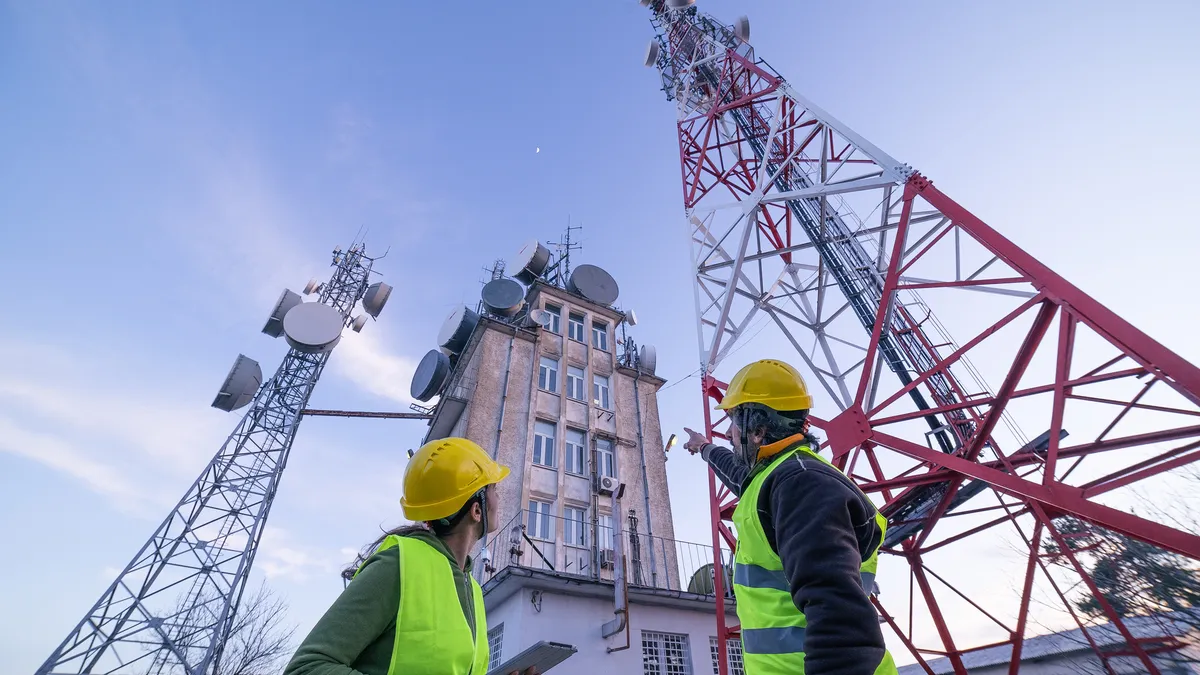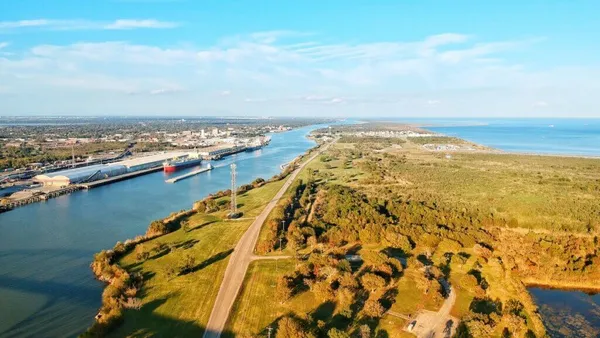To understand the transformative effect of the fifth generation of wireless communication – 5G for short – will have on commercial construction, consider this often-repeated morning ritual.
It's the caching of the day's construction documents to a tablet or smartphone device before heading to the field. This download routine is a byproduct of 4G speed. Facing a massive download in a 4G-only environment is something no project foreman or superintendent wants to face. Better to download first thing and take your chances on catching sheet updates later.
5G data throughput, of course, changes the game. The next-gen technology data transfer rate can top 1 Gbps in certain conditions, about 70x faster than typical 4G rates. The effect is an eye-opener.
Just ask David Vasquez, director of Industrial Ecosystem Development for MEC, Private LTE & 5G for Verizon, one of three U.S. carriers, besides AT&T and T-Mobile, now racing to build out nationwide 5G infrastructure.
"The download experience is like night and day," says the firm's 5G industry specialist.
The speed is so transformative, Vasquez recommends construction leaders formulate their 5G strategy now. The concern is how construction firms will manage the massive data streams unleashed from 5G-enabled sensors, drones, autonomous equipment, VR/AR headsets, models, and as-yet-unimagined applications. If you think you're already collecting plenty of data, just wait.
Few dispute the construction industry is on the eve of a major transformation. Beyond the well-documented speed differential between 4G and 5G, the reasons include:
- Low Latency. 5G networks are characterized by low-latency, free of the 4G stutter effect seen in live zoom meetings and other real-time applications. "Not everything in construction will benefit from a reliable, secure, and very fast low-latency network," says Kevin Soohoo, Director, Construction and Engineering for Egnyte, a leading content management company with a focus on the AEC sector. "But in most cases, it will."
Take location tracking of workers and equipment, for example. "Arguably, the 'most expensive' equipment is already being tagged/tracked. With 5G, it's now the opportunity to tag everything—its ladders & pushcarts. I've heard numerous stories of a Foreman wasting hours in their days trying to locate their ladder or cart because someone else using it," explains Soohoo. "The same is true for workers. Safety is enhanced with precise, up-to-the-second location tracking confidence."
- Sensor Enablement. The application of IoT (Internet of things) technology will gain even more momentum as next-generation sensors take expanded roles across nearly all phases of the building lifecycle. Vasquez speculates how a disposable sensor could transform concrete pours. "The science of combining admixture chemistry, temperature, and other placement factors is exacting. A disposable sensor could be used to report R-T pour conditions to the pour supervisor. Instant data verification means more pour confidence," reports Vasquez.
The increasingly blurred line between manufacturing and construction through off-site fabrication of building elements is another area sensors could be deployed. "5G-enabled sensors can instrument a machine that may have no self-diagnostic capability, helping improve manufacturing and maintenance with previously unavailable insights," Soohoo says. 5G connectivity allows you to link industrial IoT implementation with a unified namespace, a software technology that acts as a central data clearinghouse for user-defined analytics. The new insights offer ways to improve manufacturing productivity.
- Skill Development. Construction's shrinking talent pool is well-documented. What 5G adds to the conversation are applications that may help bridge the divide between apprentice and skilled industry veteran. "The days of flying installation specialists all over the country, without first trying to solve the challenge with technology is over. If it wasn't over before COVID, COVID made sure of it. Projects are more dependent than ever on local talent, experienced or not. Remote workforce applications that leverage VR/AR and R-T video can close the know-how gap by putting expert eyes on the task. If you could reduce apprentice time by X while delivering quality work for less cost, why wouldn't you? It would help solve a big industry challenge," observes Vasquez.
Autonomous vehicle operation is a technology rapidly advancing across mining and agriculture. Now it's slowly making its way in earth moving/construction site preparation. Imagine how different the conversation becomes when you offer a young person control of several large autonomous earth movers, each remotely piloted from a 5G-enabled operations center. For operator-starved heavy construction contractors, running an industrial-grade drone may be just the solution they need.
- Faster! Lighter! Cheaper! One of the more intriguing aspects of 5G will be the escalating shift of computer processing from the device (tablet, smartphone, AR glasses, VR headset, etc.) to the cloud. The advent of cloud processing translates into a device that requires less cost, weight, and size. How about a lightweight tablet? Or a smartphone or VR headset for a fraction of the price? In a few years, the marketplace for devices should be dramatically different.
The promise of 5G is vast. The projected opportunities are remarkable even without considering the innovation it will inspire. Think how 4G revolutionized video, a mobile service we take for granted. Now multiply that advance exponentially. It's easy to see why identifying partners that can help manage the massive data flow representing the 5G experience will be critical in helping shape and govern the new world ahead.
What is your 5G strategy? Look to companies like Egnyte to help deliver the security, storage, and management expertise you need to remain competitive in a rapidly evolving build environment.










